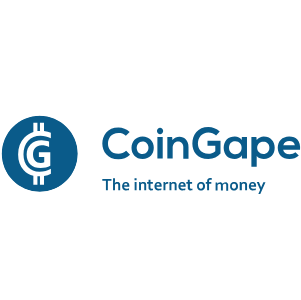

HIVE Digital Technologies: A Tale Of Unstable Earnings And Financial Vulnerability
Summary HIVE Digital Technologies operates in the high-growth sector of cryptocurrency mining and high-performance computing. The company shows positive signs such as operational efficiency, focus on green energy, and zero pledging against Bitcoin assets. However, red flags including fluctuating revenues, substantial accumulated deficit, and over-reliance on volatile digital currencies raise concerns about the sustainability and stability of the investment. The stock price movements are quite volatile. Investment Thesis HIVE Digital Technologies Ltd. ( HIVE) appears to be an exciting venture at first glance, operating in the high-growth sector of cryptocurrency mining and high-performance computing. However, a deep dive into their financial metrics paints a more complicated picture. The company's operational efficiency, focus on green energy, and zero pledging against Bitcoin assets are positive signs. However, considerable red flags around fluctuating revenues, substantial accumulated deficit, and over-reliance on volatile digital currencies bring into question the sustainability and stability of the investment. Therefore, the recommended action for investors is to SELL or HOLD . Overview HIVE Digital Technologies Ltd., a growth-focused company, is listed on both the TSX Venture Exchange and the NASDAQ Capital Markets Exchange. It operates data centers used primarily for high-performance computing and cryptocurrency mining. A notable feature of HIVE is that it bridges the gap between traditional capital markets and the Bitcoin blockchain sector. This is because the company holds a significant amount of Bitcoin and also converts other cryptocurrencies it mines into Bitcoin. Their data centers are powered by green energy and are spread across Canada, Sweden, and Iceland. Specifically, they have facilities with varying hash rates and megawatt capacities; for example, their New Brunswick, Canada facility operates with a hash rate of 1,700 PH/s and utilizes 60 MW out of a total capacity of 70 MW. On the financial side of things, HIVE generates its revenue from transaction verification services in cryptocurrency mining. They haven't pledged their Bitcoin assets against any form of debt, which is a positive sign for the company's financial health. On March 7, 2022, the company entered into a Supply Agreement with Intel Corporation for a new type of ASICs, specifically designed for processing SHA-256 cryptographic hash functions. However, Intel has discontinued this Blockscale chip program. When it comes to long-term investment, HIVE offers some compelling points. They are operationally efficient, utilizing a significant portion of their data center power for cryptocurrency mining. Their multiple geographic locations also add an element of diversification, and their focus on using green energy could make them more sustainable in the long run. HIVE is also benefiting from growing investor interest in AI technologies , given the company's high computing capacity with Nvidia GPUs. The company recently rebranded itself, shifting focus from blockchain to AI and high performance computing services. It has also introduced a new product called "HIVE Cloud", targeting small and medium-sized businesses needing HPC services. Revenue Analysis Author analysis The revenue has shown high volatility fluctuating, with a high of $44,178,526 in Q1 2023 but dropping by nearly 50% to $23,344,086 in Q1 2024. The net income has improved from a loss of $116,026,798 in Q1 2023 but narrowed down to a loss of $16,251,116 in Q1 2024, signalling some sort of recovery. Operating and maintenance costs have been fairly stable, fluctuating between $10,702,734 and $17,161,751. The gross operating margin percentage has been decent, although it has fallen from 61% to 34% in the span of a year. This is the most critical metric to keep an eye on as it directly speaks to the company's core operating efficiency. When it comes to debt, the finance expense has been steady, which suggests the company's debt situation is not out of control. The fluctuating revenues and the revaluation of digital currencies are red flags suggesting their earnings might not be sustainable. The company had a huge loss in revaluation in 2022, which didn't repeat in 2023. This indicates that the company's financials are deeply tied to the volatile crypto market. That's a red flag if you're looking for stable earnings. The fact that they've cut their net loss is good, but they're still not profitable. Given the drastic drop in revenue and the dependency on the volatile digital currency market, things look risky. If they don't diversify their revenue streams or find a way to drastically cut costs, the future might be tough. Balance Sheet Analysis Looking at the Balance Sheet, we see a mixed bag for this company as of June 2023. Starting with assets, the company has around $4.5 million in cash, slightly up from $4.3 million in March 2023. However, amounts receivable and prepaids have gone down a bit from $9.35 million to $8.96 million. The company's investments also decreased from $2.86 million to $2.23 million. A big chunk of their assets is in digital currencies, valued at about $59.5 million, which is down from $65.8 million. When it comes to long-term assets like plant and equipment, they're holding steady at around $86 million. Switching over to liabilities, they owe about $8.6 million in accounts payable and accrued liabilities, which is a small decrease from the $9.3 million they owed before. The company also has various loans and a current income tax liability, collectively amounting to around $15 million. Their long-term liabilities seem relatively stable. Now, talking about equity, the share capital stands at an impressive $421 million. The company also has an equity reserve of about $20 million and other comprehensive income of around $12 million. However, there's a huge red flag with an accumulated deficit of a staggering negative $312 million. With a current ratio of 3.12 (that's $75,266,369 divided by $24,121,039, by the way) and a debt to equity ratio of 0.33 ($46,790,083 divided by $141,580,519), we might think the company is doing well. However the company holds $59,547,361 of digital currency which is highly volatile. When considering the quality of earnings, many of their assets are tied up in the volatile digital currency market, and the accumulated deficit is a huge warning sign about the sustainability of the company's earnings. Based on this performance and the declining trend, I wouldn't expect the next year to be a blockbuster for them. So, if I had to spotlight one figure to keep an eye on, it would be this accumulated deficit of $(312,916,972). That thing needs a turnaround story, and fast. Cash Flow Analysis Author analysis Cash from Operations had a good run, surging from $29 million in 2021 to $76 million in 2022 before declining to $46 million in 2023. On the investing side, Capital Expenditures increased from -$87 million in 2021 to -$202 million in 2022 and then moving back to -$45 million in 2023. This kind of fluctuation might be signaling that the company is either rapidly expanding or just burning through cash, as the company's value depends on the movement in volatile cryptocurrencies. When it comes to financing, Short-term Borrowings and the current portion of Long-term Debt are on the rise, jumping from $2 million to $10 million and then stabilizing at $9 million. This tells us the company is leaning more on debt, which isn't ideal. The quality of earnings also needs a closer look. Net Working Capital is shrinking, down from $87 million in 2021 to $56 million in 2023.That could signal issues with how efficiently the company is using its assets. The EBIT declined from $73 million in 2021 to -$43 million in 2023, and NOPAT followed that pattern, showing that earnings are not stable. Unlevered and Levered Free Cash Flows were in the negatives in both 2021 and 2022 but came close to breaking even in 2023 at -$7 million and $1 million, respectively. Revenue grew from $100 million in 2021 to $216 million in 2022, and then crashed to $86 million in 2023. The decrease in Net Working Capital coupled with an increase in short-term borrowings and current portions of long-term debt, which went from $2 million to $9 million, is a significant worry. This indicates solvency issues and the company is accumulating debt to finance its operations. As for risks, the declining profitability and liquidity make the company a high-risk venture. Shareholder Yield Author analysis The Dividend Yield is zero, which means the company isn't paying its shareholders any dividends. The Buyback Yield is at -2.28%, which usually would be a good thing, showing the company is buying its own shares. Moreover, HIVE disclosed a shelf offering of up to $100 million in stock issuance, indicating potential dilution for current shareholders. Then there's the Debt Paydown Yield at 2.12%, which is a good sign that the company is working on reducing its debt. So, what should we expect next year? Well, if the company keeps up with its current strategy of buybacks and paying off debt, you can bet there won't be dividends anytime soon. In fact, the negative Net Payout Yield of -2.28% and Shareholder Yield of -0.15% might continue if things don't improve. The 2.12% Debt Paydown Yield is crucial metric to watch as it could be a savior in keeping the company financially stable. When it comes to the company's health, no dividends and a focus on debt reduction tell me it's likely working on being solvent. That 2.12% Debt Paydown Yield further suggests the debt risk is being managed. So, if you're an investor, I'd say don't buy more shares or even consider selling. External factors like rising interest rates could be the reason behind the focus on debt reduction. To sum it up, investing in this company appears to be a risky move right now. Altman-Z Score Author analysis The Z-Score is a formula used to predict a company's likelihood of going bankrupt. A score below 1.8 usually signals a high chance of bankruptcy, a score between 1.8 and 3 indicates a grey zone, and a score above 3 is considered safe. The Z-Score for Hive Technologies is 1.25, which puts it in the "grey zone". This means the company is not in immediate danger of bankruptcy, but it's not safe either. Now, let's break down the components: Working Capital / Total Assets : Latest figures are at 1.78, down from 2.03 the previous fiscal year. This ratio shows how well the company can cover its short-term debts. The downward trend isn't promising. Retained Earnings / Total Assets : The value is -5.42, even lower than last year's -4.93. Retained earnings are profits that the company keeps rather than distributing as dividends. A negative value could imply that the company is accumulating losses. EBIT / Total Assets : The latest is -1.54, slightly better than -4.30 from last year. EBIT (Earnings Before Interest and Taxes) indicates the company's profitability. The negative value means the company isn't profitable, although it's slightly improving. BV of Equities / BV of Liabilities : It's 3.18 now, slightly down from 3.30. This ratio shows how well the company is funded by its owners vs. creditors. A high number is usually a good sign, indicating that the company has more owner funding than creditor loans. The declining Working Capital / Total Assets ratio could imply liquidity issues, while negative Retained Earnings / Total Assets and EBIT / Total Assets ratios indicate unprofitability and possibly accumulating debt. While the BV of Equities / BV of Liabilities is positive, it's not enough to offset the other negative indicators. In summary, Hive Technologies seems to be in a precarious financial position. The Z-Score of 1.25 places it in the grey zone, implying a risk of bankruptcy or financial distress if the current trends continue. Immediate action is needed to improve profitability and liquidity. If trends hold, the next year could see a continuation of these troubling metrics, perhaps even pushing the Z-Score into high-risk territory below 1.8. The numbers tell us that the company's value is primarily driven by a still-reasonable balance between assets and liabilities (3.18), but the key metric to keep an eye on is the Working Capital to Total Assets ratio (1.78), which is a sign of looming liquidity issues. Investment Recommendation Based on the above analysis, if I had to make an investment recommendation, I would say SELL or HOLD . The company shows several red flags: significant revenue volatility, an accumulated deficit, and an over-reliance on digital currencies. They are burning through cash and are leaning more on debt. Their Z-score is also a concern, sitting in a grey zone that suggests they aren't out of the woods when it comes to the risk of financial distress. In a nutshell, the company seems to be in a precarious financial position, and unless there's a strong strategy to turn things around quickly, the future looks challenging.








